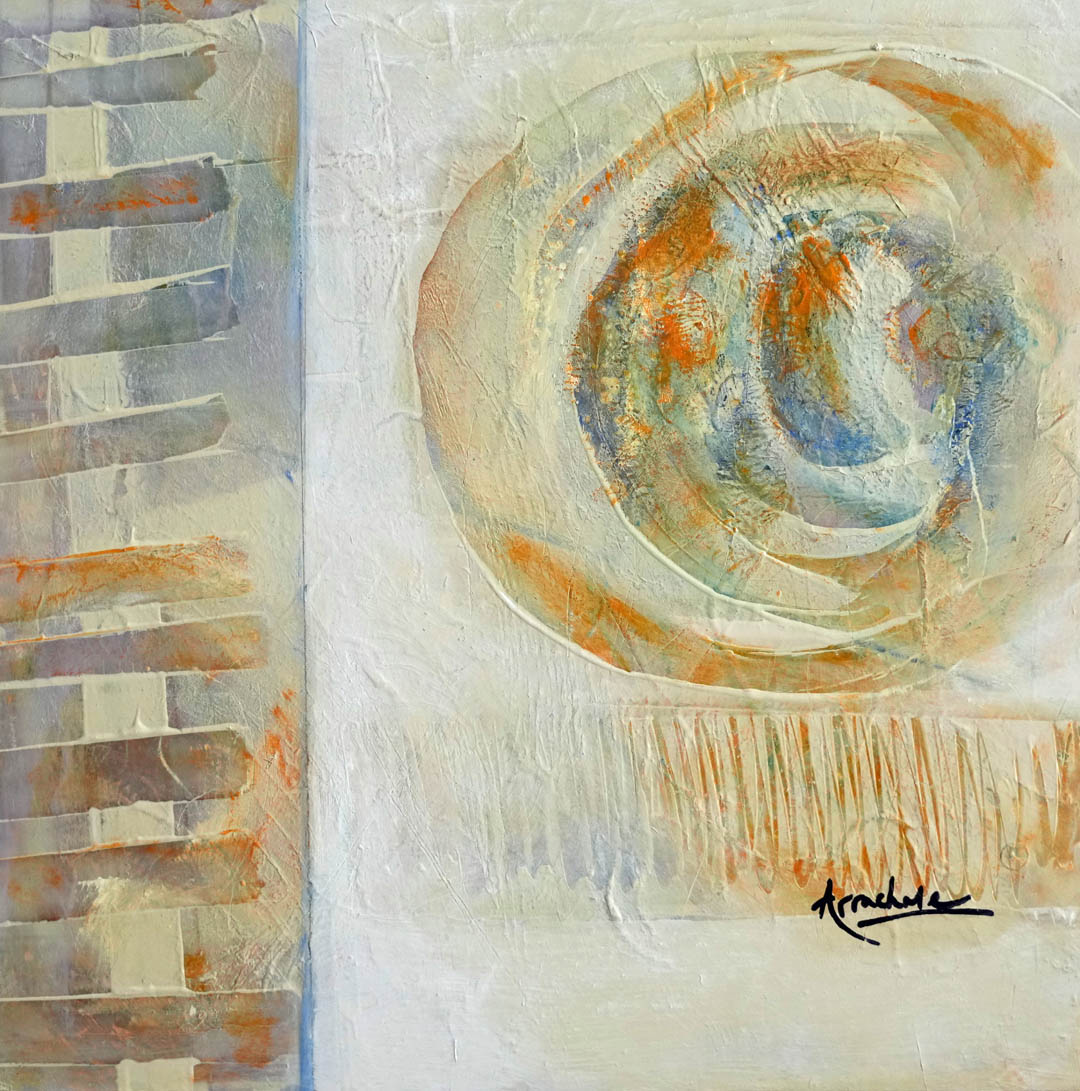Article #35 Beginner’s Painting Dilemma
by Arrachme
Sitting at luncheon with a group of friends. My girlfriend leaned over and whispered, “I am thinking of starting to paint. Which type of paint should a beginner use?” Little did she know that this question to me is like, which came first the chicken of the egg?
As always, I paused before answering. During this pause, many thoughts passed through my head. They quickly organized themselves blending knowledge and experience. Then, answers automatically ensue. The question to begin with depends on the individual. Even though there may appear to be void in technical art as a beginner, the history of the person plays a key role in the progress of the individual. I knew from spending time with my friend that she adapts quickly and possesses a keen artistic creativity as a professional writer. A crafter of stories. True abstractionists are also crafters of storytelling with paint.
During my pause, I flashed to a lovely acquaintance that I made the week before. She proudly shared with me her impressionistic landscape with the focal point smack dab in the middle of the painting. She had explained that she left a teacher up north that she adored. Listening carefully, she told me that her impression of him was that he was well accomplished. Then it happened, she pulled up his art to show it to those of us sitting at the table. He too placed the primary focal point in the center a canvas. It was like a big eye screaming. The very first thing I teach to beginners is technical correctness in building a composition. Whether using the simple rule of thirds, or the complex golden triangle placement depends on the elements in the painting.
This recollection emphasized that I needed to answer my friend correctly. Beginners are not stones, they are porous! The worst thing that I could do as a teacher, would be to ingrain bad habits from the get-go. So, here is my answer. It depends on the individual. If you like to draw, move slowly and methodically, then you might start with watercolor or colored pencil. Left brain thinkers do well with these mediums.
If you wish to become a loose and free painter, in the world of abstraction or enjoy translating living forms and shapes, then acrylic or oil would be the way to go. Always use professional paint as it does not contain fillers. If you start with acrylic but decide to change to oil, you can save on cost. Acrylic can be used to start a painting as a foundation then switch to oils. It is important to know that where some acrylic and oil methods are similar, they are not all interchangeable. Another important point is that crafter’s paint is not the same as artist’s paint.
Brushes
Brushes used for acrylic need to be kept separate from oil. The same goes for watercolor. If you use a brush for watercolor, it should be kept pristine and not used with other mediums.

Teachers
It is important to find a teacher that knows the differences between mediums and how to paint with different mediums. This is so during the precious, formative beginning of the artist’s life. One can have clear understanding without developing ingrained bad habits that must be undone. Now you know what paint a beginner can choose to use. Let the journey begin. Can you identify the focal point in my painting, Deep Divide 2? It is a cold wax and oil painting on wood. A foolproof hint is to squint your eyes so it will appear.
